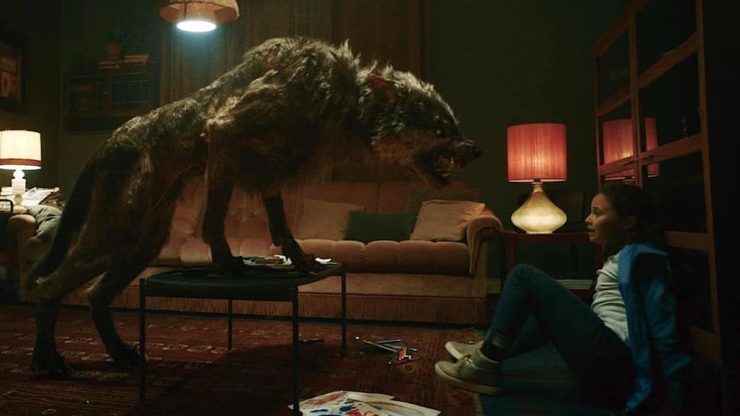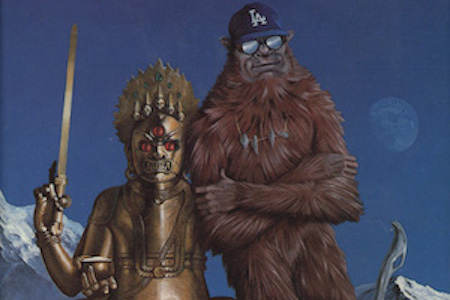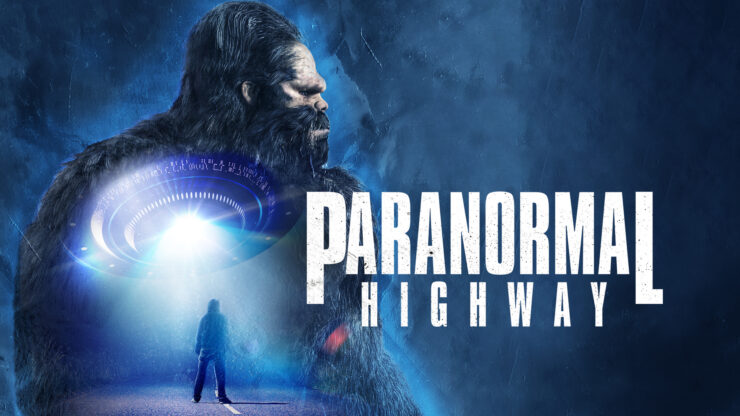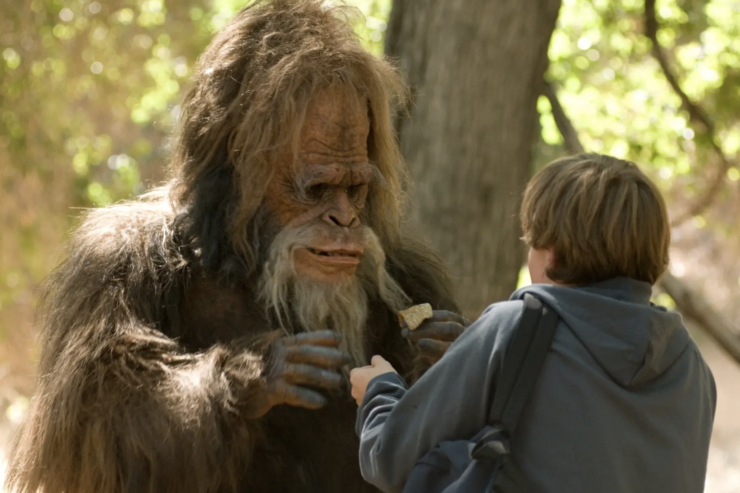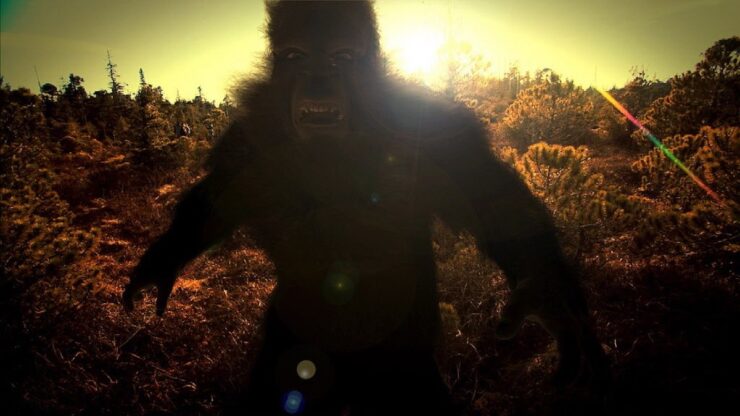I was going to move on to a new chapter of the Bestiary this week. Really. I was. Wolves are not the only shifters out there. Surely there’s no need to continue down this particular, if fascinating, rabbit hole. I am not going to talk about werewolves again. Not even about the Teen Wolf semi-spinoff that stars the great, the never to be forgotten Sarah Michelle Gellar. I am not.
But. But.
Here I am, finishing a long day’s work, settling in with Netflix. What should come up first in the Newly Added list but a Norwegian film called Viking Wolf.
Tell me how I could possibly have resisted.
There was still hope, I thought as I clicked the Play button. It might just be another bog-standard werewolf movie. Nothing new. Nothing worth stopping for. It might have buckets of gore. I don’t do buckets of gore.
There are tropes. Every film has tropes. There’s some gore. Hard to do werewolves without it.
But it’s good. It’s actually, really good.
It’s Nordic Noir meets The Curse of the Werewolf, with touches of Teen Wolf. Add a hint of An American Werewolf in London, but make it a Norwegian werewolf in Nybo. New kid from the big city tries fit in with the small-town crowd. Enter vicious killer wolf. Mix in family tragedy, tough-cop mom and sweet househusband stepdad, and much-loved kid sister who happens to be Deaf.
This wolf is old. As old as the Vikings and their Sagas. Gudbrand the Grim takes twenty ships to raid Normandy, and finds his fate in a monastery with a room no one dares enter. In the room is the Hound of Hell.
Gudbrand is a bold Viking who fears nothing and no one. He tucks the snarling Hound under his arm and heads back to the ships. By the time they get to Norway, Gudbrand and all his crews are dead, and the Hound takes off for the deep woods.
A thousand years later, widowed police officer Liv moves her two daughters and her new husband from Oslo to rural Nybo. Elder daughter Thale is a classic teenager: sulky, rebellious, sneaking out at every opportunity to meet up with a boy. There’s a Mean Girl, of course, and a pack of bullies. And, also of course, the wolf in the woods.
Werewolf lore here is not tied to the moon or any particular plant or ritual practice (you can’t catch lycanthropy by drinking from a werewolf track). There’s sort-of-scientific handwaving about the existence of this human-lupine subspecies. A grizzled old one-armed werewolf hunter arrives in his battered camper to educate the initially very skeptical Liv about the giant wolf she and her boss are hunting.
Werewolves, he says, are a hybrid species. An experiment in creating a combination of human intelligence and lupine strength and stamina, though how medieval science managed it, he doesn’t say. It’s an infection, or a poison as the subtitles translate it, and it has a supernatural component: the only antidote is to eliminate the wolf’s entire bloodline.
It’s spread by a bite. There’s no cure for the bitten; once infected, they all have to die, or they’ll continue to infect the population. Ordinary bullets have no effect on them. The only way to kill them is to shoot them with a silver bullet. This causes a chemical reaction that destroys their tissues and melts their organs.
Victims of a werewolf’s bite transform gradually. First they’ll be aware of heightened senses. Then their bodies will begin to transform, becoming more and more wolf-like, until the transformation is complete. These aren’t Lon Chaney-style wolf-men, they’re true wolves, though very large—it’s not explicit, but I suspect that conservation of mass applies, and the werewolf is the same size as the original human, which will make even a small werewolf a quite large wolf.
By that time they will have lost their humanity and become pure predators. Though, as we see during the course of the film, a fully transformed werewolf may retain some sense of who they are and what has happened to them. They may be unable to control their bloodlust, but they will feel grief and possibly remorse for what they’ve done.
They are not pack animals. They have no social structure. There is nothing to them but the compulsion to kill. Nor do they shift back to human form when they die. Once they transform, the transformation is permanent.
They do however react oddly to the loss of a body part. When the original wolf rips off a claw during an attack, it grows back as a human nail. In fact the veterinarian who does the necropsy on the slain werewolf finds human DNA. Sort-of-science backs up the legend, and helps to convince Liv that not only do werewolves exist, there’s an all too real one killing people in her jurisdiction.
The mix of police procedural, Nordic noir style, and good old-fashioned werewolf horror works amazingly well. The gore is fairly understated, but there’s no doubt as to what’s happening, either with the wolf or to the human victims. Liv is a great character: tough, a little jaded, but fierce in defense of her family. I’d love an actual detective series with Liv as protagonist, confronting killers both human and supernatural.
The landscape of Nybo, the deep woods that surround it, the dammed river and the stark buildings of the town, the winter-fallow farmland on which Liv and her family live, create a world of muted, wintry daylight and pallidly moonlit nights. From the contents of the family’s fridge to the rows of bored students in the public-school classroom, from the multiple levels in which Thale and her Deaf little sister Jenny communicate to the sheriff/police chief who has apparently never seen a gruesomely murdered victim and does not handle it well at all, there’s a real sense that the filmmakers were paying attention. They’ve built their world with care.
There are questions. Gaps and under- or minimally explained bits. But it hangs together, thanks to the strength of its characters.
This is not a werewolf that will ever find a way to reconcile its human and lupine halves. It’s a curse without a cure. The only way out is death.
And yet it’s not all dark. There’s light in the world, too, and a glimmer of hope. Definitely on the human side. Maybe—however faint, however ephemeral—on the side of the wolf.
Judith Tarr is a lifelong horse person. She supports her habit by writing works of fantasy and science fiction as well as historical novels, many of which have been published as ebooks. She’s written a primer for writers who want to write about horses: Writing Horses: The Fine Art of Getting It Right. She lives near Tucson, Arizona with a herd of Lipizzans, a clowder of cats, and a blue-eyed dog.










